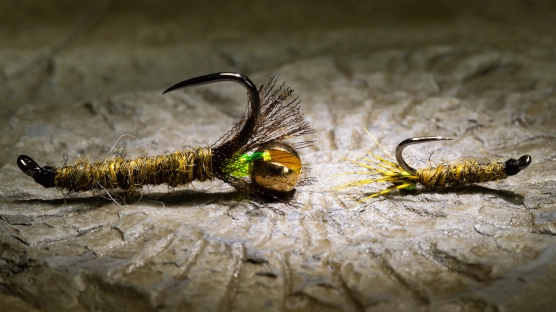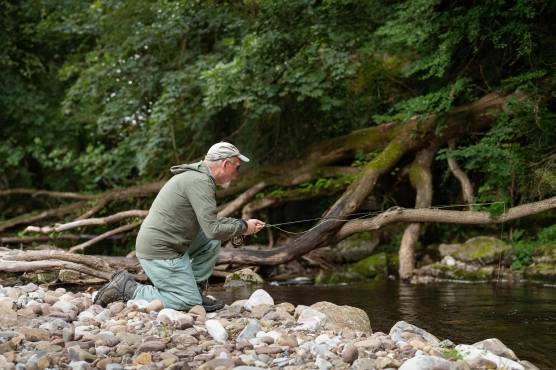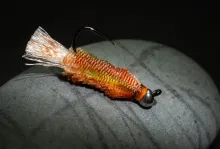A scaled-down version of the author’s own Headbanger Caddis, a cased nymph caddis pattern
This is a scaled down version of my Headbanger Cased Caddis. It’s tied using the same principle with a tungsten bead attached at the bend of the hook on a length of monofilament. The original Headbanger has a slotted tungsten bead knotted onto a piece of green monofilament to imitate the caddis head and body. It was designed for fishing the Taff and other post-industrial rivers of south Wales for grayling in the winter when heavy flies are needed to get down to the riverbed in the deep runs.
Jig hooks, which are the standard for heavy winter flies with large tungsten beads, do not provide much space to build a realistically proportioned cased caddis. The Headbanger is tied on a conventional long shank hook with the tungsten bead as the head of the caddis larva. This produces an imitation with a long case with the weight positioned to make the fly fish point up as it trundles over the gravel.
The Mini Headbanger is designed for fishing not on big deep rivers in the winter, but for small shallow streams in the summer. With a tiny 1.5mm tungsten bead on a piece of melted black monofilament it’s for casting not lobbing and drifts rather than plummets.
- Log in to post comments













Nice fly :-)
Again:
Nice fly :-)
I love the simple patterns - they are quick for tying, effective on the water and look nicely.
Good job.